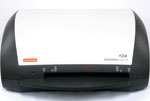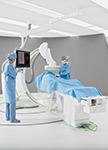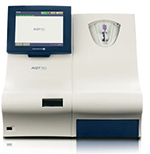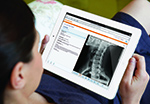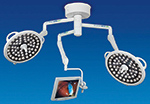Tabletop computed radiography (CR) system
The Vita XE CR Imaging System is a tabletop computed radiography system which produces diagnostic quality images at a speed of 60+ plates per hour and is an ideal fit for smaller hospitals, imaging centres, clinics and private practices. This system is designed to produce diagnostic images immediately with the option of completing image optimisation easily according to user preference. It offers a variety of options to enhance productivity and satisfy specialised imaging needs. These options include: long-length imaging, CD/ DVD output, modality work list, Image Suite mini-PACS software and a dental panoramic module. Accessories are also available which could eliminate the need for expensive third party quality certification testing. The system has been designed to allow for seamless transitions from one system to another in a multi-CR facility and/or across multiple facilities. This system supports seven different cassette sizes at standard resolution and four cassette sizes in high resolution.
Read more

